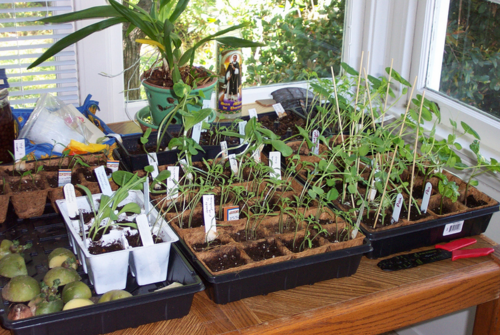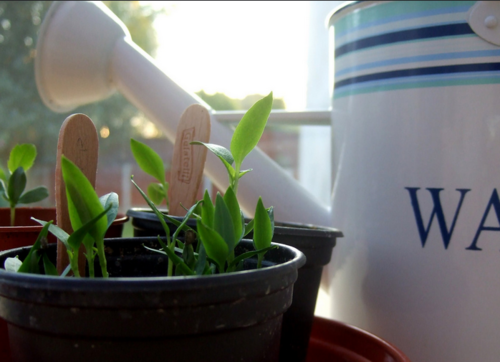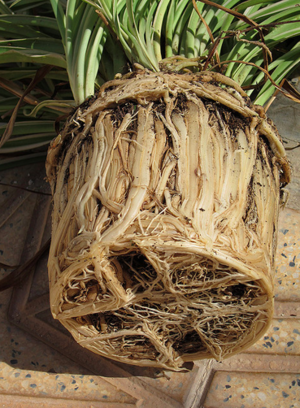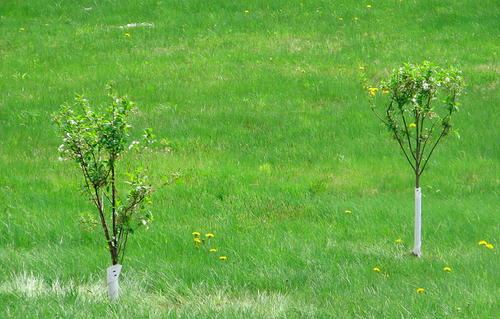Most gardeners spend a lot of time on soil preparation prior to planting. The plants being planted also need to have some form of preparation prior to transferring them from container to ground soil or a new container.
The type of preparation may be dependent on the type of plant in question but for most plants, there are some standard basics to attend to before planting. This article provides an overview of the things to consider before planting seedlings, juvenile and well advanced plants into the soil of a new container, garden, yard, farm or elsewhere outdoors.
Healthy plants

At the most basic, plants need to be in good condition before planting. A wilting, half-alive plant will not be revived by digging a hole in the garden and putting the plant into it. In most cases, this will simply hasten its demise.
If the plants are not in the best condition, spend time improving the prospects for the plant first. This might include fertilising, watering, trimming the dead parts and perhaps even repotting to encourage new growth and stronger root formation. Patience is key when helping a plant to recover.
In many cases, you need to plant during the right season to maintain the plant's health. This is particularly important with plants that have a low frost tolerance and need to be kept in a container out of the cold until the soil and air temperatures begin to warm up.
Watering the plants

Before transferring plants from the container to the ground plot prepared for them, water the container well. This helps to ease the plant from the container and helps to ensure that the plant doesn't experience shock from being placed into dry soil with dry roots.
In addition, avoid planting on windy days. A windy day will increase the chances that the plant may dry out before it has had a chance to settle into its new position.
Plant type
Know your plant. If the plant comes with instructions, read these thoroughly before planting. There may be some advice as to what you need to do by way of soil preparation, plant preparation and specific preferences of the plant. If there are no instructions, look the plant up online or in a gardening book, just to be sure you are choosing the right position and soil type and the right season for planting.
Roots
Roots growing out of base of plant
If the plant roots are intimately entwined with the container base, you'll need to gently ease these away from the base prior to trying to tip the plant out of the container. Many plants are left until their roots are emerging through the container's drainage holes and this will often cause an obstruction when trying to get the plant out.
Gently shift the roots around and try to untangle them enough to pull through the container holes with ease when the plant is tapped out. In many cases, this may not be possible though and you might have to cut the container if possible, to allow the roots out with ease. Where the container cannot be cut or it is impractical to cut it, the roots may need to be broken or cut. However, in this case, do so with the utmost care and aim to leave the roots as intact as possible.
Root bound plants

If the plant is "root bound" (the plant outgrew its container and grows its roots round and round the container), the plant isn't as healthy as a non root bound counterpart. However, it is possible to save the plant and give it a new chance at growing strongly. You'll need to water the container really well to begin with; this may involve placing the whole container into a bucket of water, as root bound plants are often more roots than soil. After a good soak, remove the plant from the container and spend some time massaging and pulling apart the roots as gently as you can. Try to release the roots from the ball they've amassed into, teasing them apart into a looser formation.
If the roots are so tightly intertwined that you find you can't gently tease them apart, you'll need to do some first aid on the plant before it can be replanted. Using a clean and sharp knife, cut the roots apart in several places. This does damage the roots but it also provides them with a new opportunity to form new root growth into the soil once planted. Cut away any excessive root matting from the base of the soil/plant ball as well.
When teasing apart the roots and/or cutting them, this is best done in a cool environment, such as indoors, in the shade and during the cooler part of the day. As soon as you have finished fixing the roots as best you can, replant the plant immediately. Don't allow the roots to dry out. Water well and fertilise to encourage new root growth. A reduction in foliage can help, as the plant can then concentrate on new and stronger root formation over having to nurture many leaves.
Realize that a root bound plant may not survive the process of root tidying and transplanting to a new growing position. You can do your best to help it by keeping it well watered, properly fertilised and shaded until it shows signs of rejuvenating and growing vigorously. However, it is often better to do this than to leave the plant root bound, as the plant is destined to die in the container if left that way.
Temperature
Ensure that the plants are planted when the weather is mild and not too hot or cold. Don't plant a plant that has been sitting in the baking sun and hasn't had a chance to cool down. Planting is best done at the time of day when you feel comfortable being outside too; early morning and evening are often a good time.
Most importantly, already know where you are going to plant the plant before removing it from its container. This ensures that the area is prepared and the plant doesn't have to spend much time with its roots exposed to the air and temperature changes. Work quickly between the time of removing the plant from its container and placing it into its new position.
Well advanced plants

Well advanced plants refers to plants that are already considered to be in their adolescent or adult stages, such as tree saplings or bushes ready to produce fruit, etc. Always follow the instructions provided with the plant. If there aren't any, contact the nursery or garden centre for specific advice.
See the discussion on root bound plants above if this is an issue.
Keep the plant wrapped in its cloth or plastic outer until the very moment you have the new hole prepared for its transplanting. The plant needs to experience minimal disturbance when transferred from its wrapping/container and into the ground. Ensure that the root ball is moist and not dry before planting.
The hole for an advanced tree or bush should be at least three times as wide as the plant's root mass, and should be dug in a "wok shape".[1]
The woodier roots can be removed to encourage new root growth and side roots can be removed to prevent girdling once planted.[1]